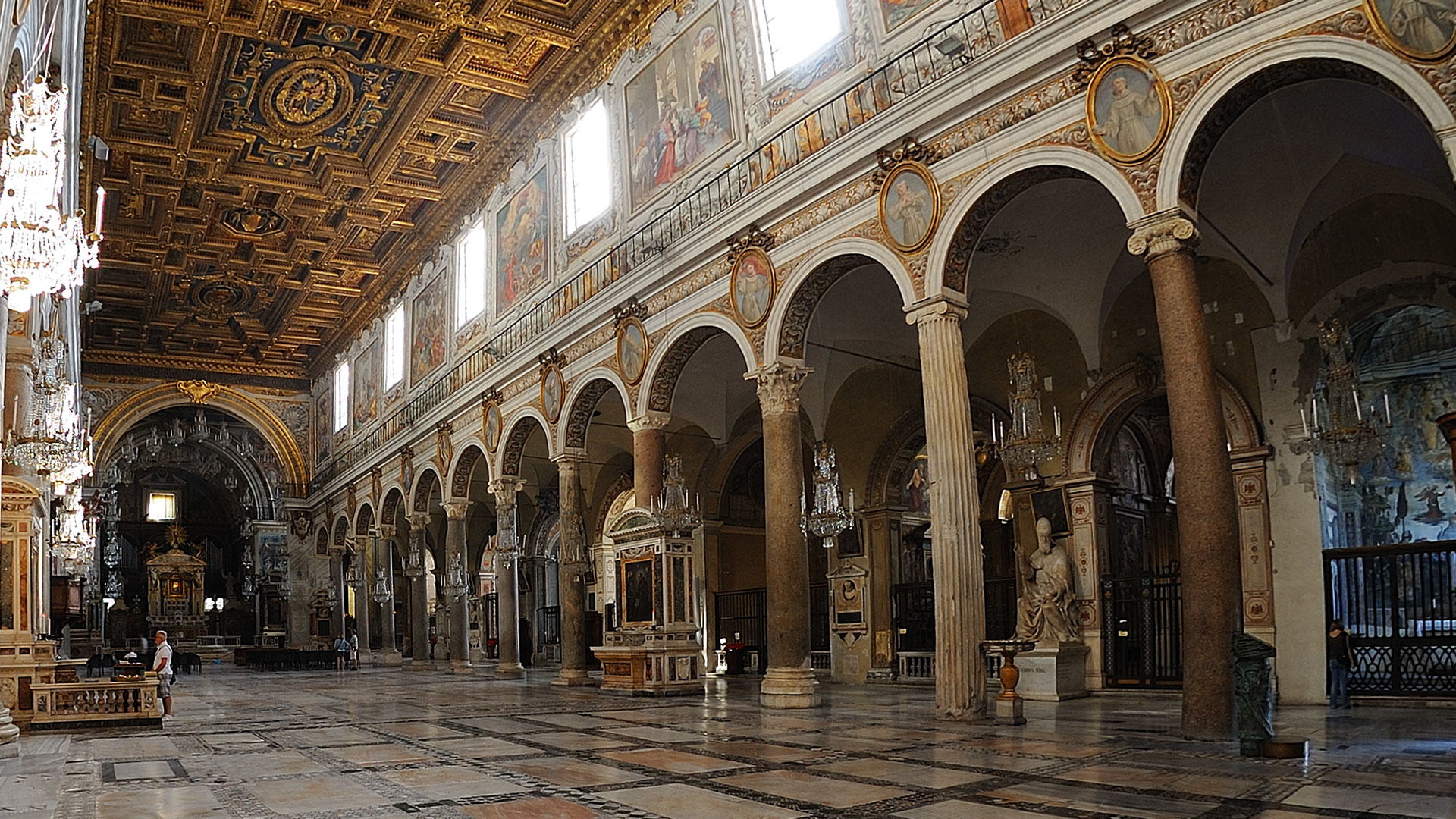
Built on the ruins of the Temple of Juno Moneta in the 6th century, the Basilica of Santa Maria in Aracoeli stands on the highest peak of the Capitol Hill. Its name originates from a legend according to which a sibyl would have predicted the coming of the son of God to Augustus by saying: "Haec est ara Filii Dei" (This is the altar of the son of God): hence the name Ara Coeli.
Around the year 1000, it became a Benedictine abbey, to subsequently pass to the minor friars, who still officiate it and who restructured it, giving it the current Roman-Gothic aspect.
In the Middle Ages, it assumed a very significant role, since the councilors gathered here to discuss the Res Publica, a sort of new forum in Rome. Inside the Basilica, the city leaders were elected, and the tribune Cola di Rienzo spoke to the people of Rome.
Here, in 1341, Francesco Petrarca was named a Poet Laureate.
In 1348, the building of a new 124-step marble staircase was a commitment to the Virgin to end the plague, raging across Europe. The marble was taken from the staircase of the Temple of Serapide at the Quirinale. The women desiring a child, the mothers asking for milk for their children, the people wanting to win the Lottery, and also the spinsters looking for a husband, who escalated it on their knees, viewed it as a real Scala Santa.
The church is primarily known for the Holy Child, the sculpture which, according to tradition, was carved in the Mount of Gethsemane olive trees wood. The "Bambinello" of the Aracoeli was dearly loved by the Romans. He was invested with miraculous powers, such as resurrecting the dead and healing the ills. It was stolen in 1994 and never returned.
In the 17th century, foreigners used to sleep on the staircase, until Prince Caffarelli sent them away by rolling barrels full of stones down the steps.
During the French occupation and the Republic of 1797, the church was deconsecrated and used as a stable. It was rehabilitated at the end of Napoleonic Rome, but after 1870, it barely managed to save itself from demolition work for the construction of the Vittoriano.
The floor of the basilica, in Cosmatesque style, is full of burials and funerary gravestones. That of the archdeacon of Aquileia Giovanni Crivelli was created by Donatello, who was in Rome between 1431 and 1433.
The church has three naves divided by reuse columns, all different from each other.
Inside one of the chapels, you can admire the remains of paintings attributed to Pietro Cavallini. In the Bufalini Chapel, there is a cycle of frescoes by Pinturicchio dedicated to San Bernardino da Siena, who, charged with heresy, risked death on the staircase of the Church. Other frescoes are the work of Benozzo Gozzoli.
From the top of the steps of the Basilica, you can enjoy a magnificent prospect of Rome over the domes of Sant'Andrea della Valle and San Pietro.
Information
Mass times
Monday: 08.00Tuesday: 08.00Wednesday: 08.00Thursday: 08.00Friday: 08.00Saturday and feast days: 08.00Sunday and feast days: 08.30, 12.00
*Monday to Saturday Masses are celebrated in the Chapel of Our Lady. On Sundays and feast days the 8.30 Mass is held in the Chapel of Our Lady while the 12.00 Mass is held in the Basilica.
Times may be subject to change so please always contact the church
 Condividi
Condividi
Location
To find out about all accessibility services, visit the Rome accessible section.











































